The Mekong Delta is a region rich in natural beauty, making it ideal for year-round travel. However, careful and thorough preparation is essential to have a memorable journey. Let’s find out with Joy Journeys how to prepare an ideal Backpacking Mekong Delta for your trip!
Contents
- 1 Planning a backpacking Mekong Delta trip
- 2 Things to do in the Mekong Delta for backpackers
- 3 Tips for Backpacking the Mekong Delta
- 4 FAQs about the Mekong Delta tours for backpackers
- 4.1 How much does it cost to backpack in the Mekong Delta?
- 4.2 Is it safe to backpack in the Mekong Delta?
- 4.3 What is the best time of year to backpack in the Mekong Delta?
- 4.4 How do I get around the Mekong Delta as a backpacker?
- 4.5 What are some must-visit places for backpackers in the Mekong Delta?
- 5 Conclusion
Planning a backpacking Mekong Delta trip
The region is suitable for tourism year-round. However, careful planning is essential to meet individual needs and preferences.
Best time to visit
The tropical monsoon climate prevails in the Mekong Delta, a geographical region of Asia:
- The rainy season (May – November): The Mekong Delta is influenced by the southwest monsoon from the sea, which makes it humid and rainy. Heavy rain in September can cause flooding. This is an excellent time to travel to the Mekong Delta because of the incredible green scenery and vast rivers.
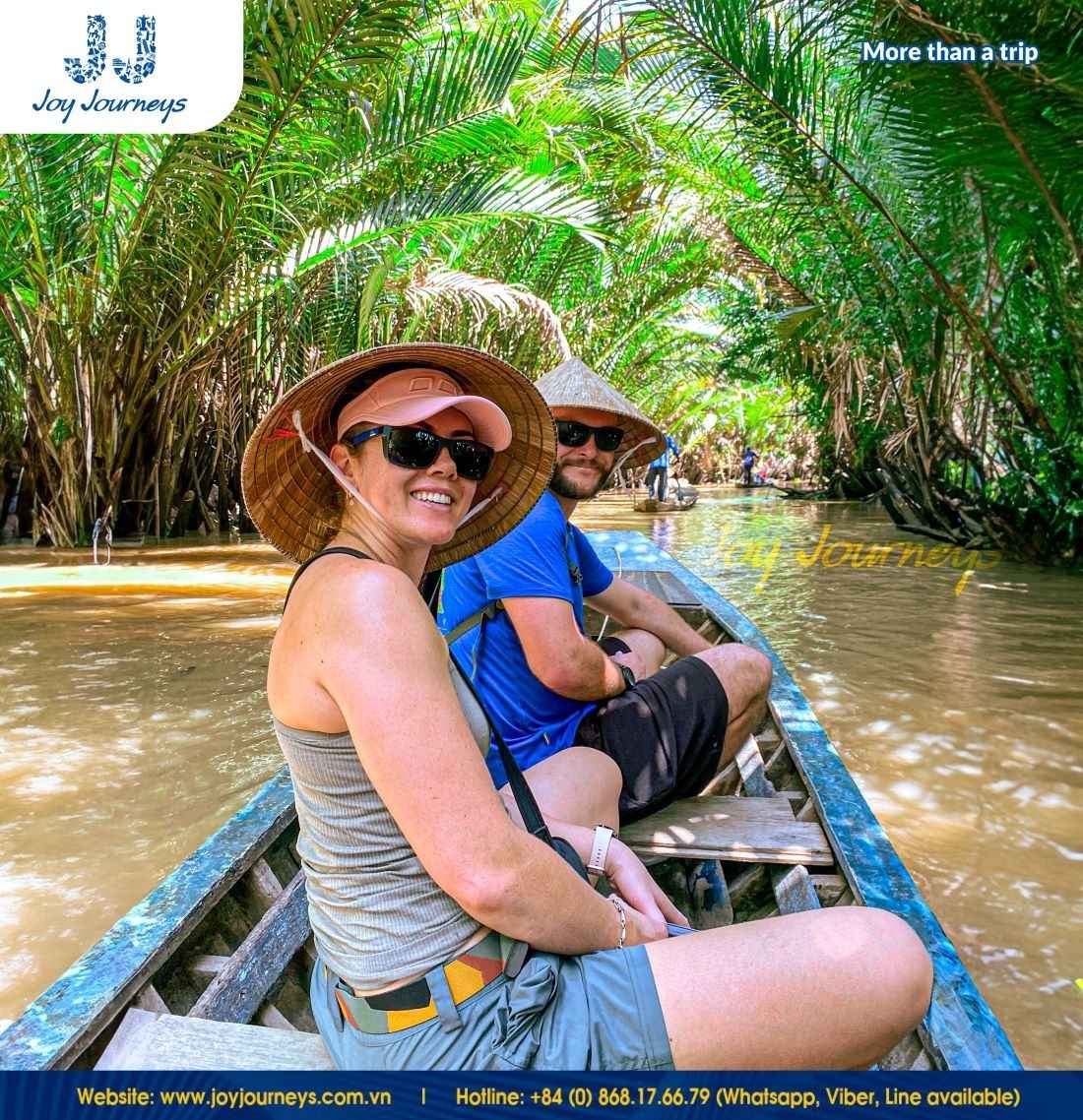
- Dry season (November – May): influenced by the northeast monsoon from the mainland, it is dry and less rainy. From March to May is the fruit ripening season, and visitors can come and experience tropical fruits.
Transportation options
Mekong Delta is a region with many rivers, so when you come here, you can experience many different means of transport, such as bicycles, cars, boats, etc.
- Motorbikes: The system of bridges, roads, and ferries from Ho Chi Minh City to provinces in the Mekong Delta is currently significantly developed; visitors can completely use motorbikes for convenient travel.
- Buses: Buses are available for travel between locations and provinces.
- Coaches: You can buy tickets directly at the counters at Mien Tay Bus Station or book them online. Depending on the province, the ticket price will fluctuate between 150,000 and 300,000 VND.
- Speedboats: Because it is a river region, you can experience the Mekong Delta by speedboat.
- Boats: This is the most authentic way to travel and admire the natural scenery of the Southwest River. Visitors can also experience the lives of people on the boats.
Accommodation
In areas with developed tourism, such as Ben Tre, My Tho, and Can Tho, finding motels and hotels is very easy. To ensure a secure stay, consider booking accommodation in advance through apps like Agoda, TripAdvisor, or Airbnb.
Remember to double-check the information of the accommodation facilities before booking to avoid being scammed.
Budgeting
The Mekong Delta has relatively cheap travel costs; the total cost for a day of travel (including food, accommodation, and transportation) is about 500,000 – 700,000 VND. Round-trip travel from Ho Chi Minh City to the Mekong Delta will cost about 300,000 – 600,000 VND if traveling by coaches. If you use a speedboat or rent a private car, the cost will be higher.
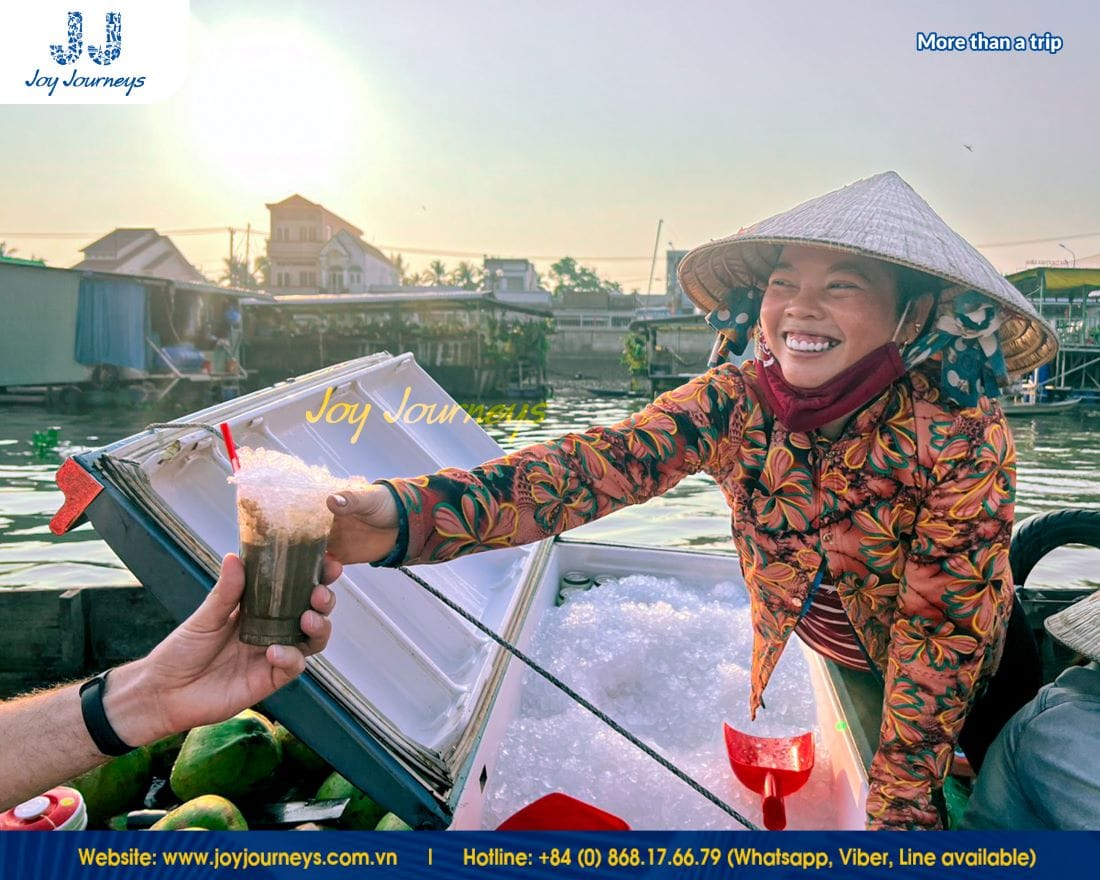
If you choose to travel by tour, day tours in this area usually cost 1,000,000 – 1,500,000 VND and 2-day, 1-night tours will cost over 3,000,000 VND.
Suggested backpacking Mekong Delta solo itineraries from Ho Chi Minh City
If you’re interested in backpacking the Mekong Delta solo, consider the following easy-to-follow itineraries:
1-Day Itinerary
With a day in the Mekong Delta, you should choose places near Ho Chi Minh City, such as My Tho and Ben Tre, for easier travel:
- Start from Saigon to Vinh Trang Pagoda, My Tho, sightseeing and exploring.

- Arrive at Cu Lao Thoi Son and experience many exciting activities such as sampan, beekeeping facility, fishing in ditches, etc.
- Visit the Nguyen Thanh Nam Coconut Religion relic.
- Return to Ho Chi Minh City.
2-Day Itinerary
A 2-day trip is quite suitable for Backpacking the Mekong Delta:
Day 1: Depart from Ho Chi Minh City to My Tho and Ben Tre
- Visit Vinh Trang Pagoda, the largest Buddhist temple in Tien Giang province.
- Take a boat trip on the Tien River and see four famous islands: Long, Lan, Quy, and Phung.
- Visit Con Phung, experience exciting activities and get close to the lives of local people. Enjoy seasonal tropical fruits and listen to ‘don ca tai tu’.
- Walk along village roads to the traditional coconut candy factory, where visitors can witness the meticulous process of making coconut candy and enjoy delicious coconut candies.
- Have lunch at Con Phung restaurant, which offers local specialties, and take some time to relax.
- Arrive in Can Tho City, walk around Ninh Kieu Wharf and enjoy local cuisine.
Day 2: Cai Rang Floating Market – My Khanh Tourist Area – Saigon
- Visit Cai Rang Floating Market – the largest wholesale floating market in the Southwest.
- Visit My Khanh Tourist Area: you will visit the fruit garden, bird nest cave, pig racing, animal circus, crocodile lake, and an ancient house over 100 years old.
- Truc Lam Phuong Nam Zen Monastery was built according to the cultural architecture of the Ly – Tran dynasties.

- Return to Ho Chi Minh City.
3-Day Itinerary
With 3 days here, you can visit more famous landmarks or national parks in the Mekong Delta:
Day 1: Visit My Tho – Ben Tre – Chau Doc (Breakfast, lunch, dinner)
- Visit Vinh Trang Pagoda, one of the famous ancient pagodas in the West, which has unique architecture.
- Visit the four islands: Long, Lan, Quy, Phung, and Thoi Son. Explore the fruit gardens, observe honey bee hives, and learn about honey collection.
- You can stop to enjoy complimentary cups of hot, fragrant honey tea and listen to the introduction of products made from honey, royal jelly, and pollen…
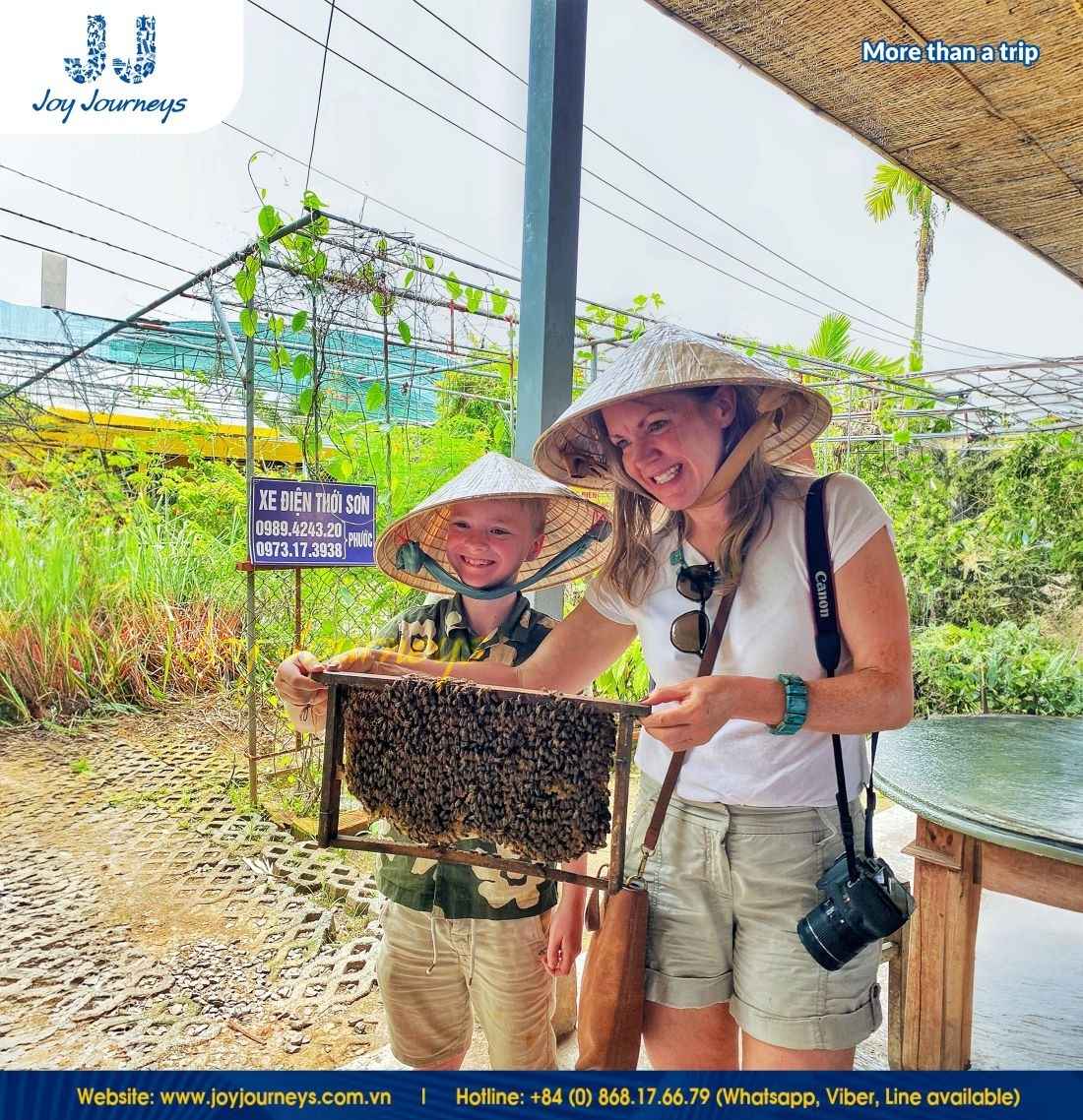
- Go to Chau Doc – An Giang, and walk around Chau Doc at night.
Day 2: Chau Doc – Tram Tra Su Forest – Can Tho
- Go to Chau Doc market, Chau Giang river bank, and Sam mountain tourist area to visit Tay An Pagoda, Thoai Ngoc Hau tomb and Ba Chua Xu temple.
- Visit the Tram Tra Su forest, which has Southeast Asia’s most beautiful flooded melaleuca forest ecosystem.
- Return to Can Tho city to walk around the walking street, Can Tho night market, check in Ninh Kieu walking street, love bridge…
Day 3: Floating Market – Con Son – Fruit Orchard – Saigon
- Visit the Cai Rang Floating Market in the morning.
- Visit Truc Lam Phuong Nam Zen Monastery Can Tho.
- Take a boat to Con Son, a green island in the middle of the Hau River with four-season fruit gardens.
- Then, return to Saigon.
Things to do in the Mekong Delta for backpackers
There are many interesting activities in the Mekong Delta, such as participating in festivals, enjoying special cuisine, listening to ‘don ca tai tu’, and more. Below are things backpackers can do in the Mekong Delta.
Cycle through the countryside
To better understand the life of the people in the Mekong Delta, cycle through the villages and observe their daily activities. Bicycles are a common means of transport here, allowing people to navigate winding roads and small bridges with ease.

Take a boat ride through the mangroves
The Mekong Delta has a dense system of rivers and canals, so traveling by boat is very popular. Visitors should experience sitting on a boat to explore the mangrove forests. This is also the most authentic experience that brings you closer to the daily life of the local people.
Visit traditional craft villages
Currently, the region has more than 300 traditional craft villages, 30 of which are over 100 years old. Many craft villages depend entirely on nature for materials such as weaving and mat weaving.
Visit old craft villages such as brick villages and coconut candy villages to learn and hear stories of the local people’s traditional crafts.
Taste local delicacies
The Mekong Delta has fruit gardens all year round, so wherever you go, you can enjoy tropical fruits: mangoes, rambutans, mangosteens, etc. In addition, this is also home to many different ethnic groups, mainly Kinh, Cham, Khmer, and Hoa. Therefore, the specialties will be different from other places such as: fermented fish noodle soup, biryani, My Tho noodles, etc.
Experience making handicrafts
Visitors can also participate in making handicraft products such as hats, mats, and bracelets from water hyacinths.
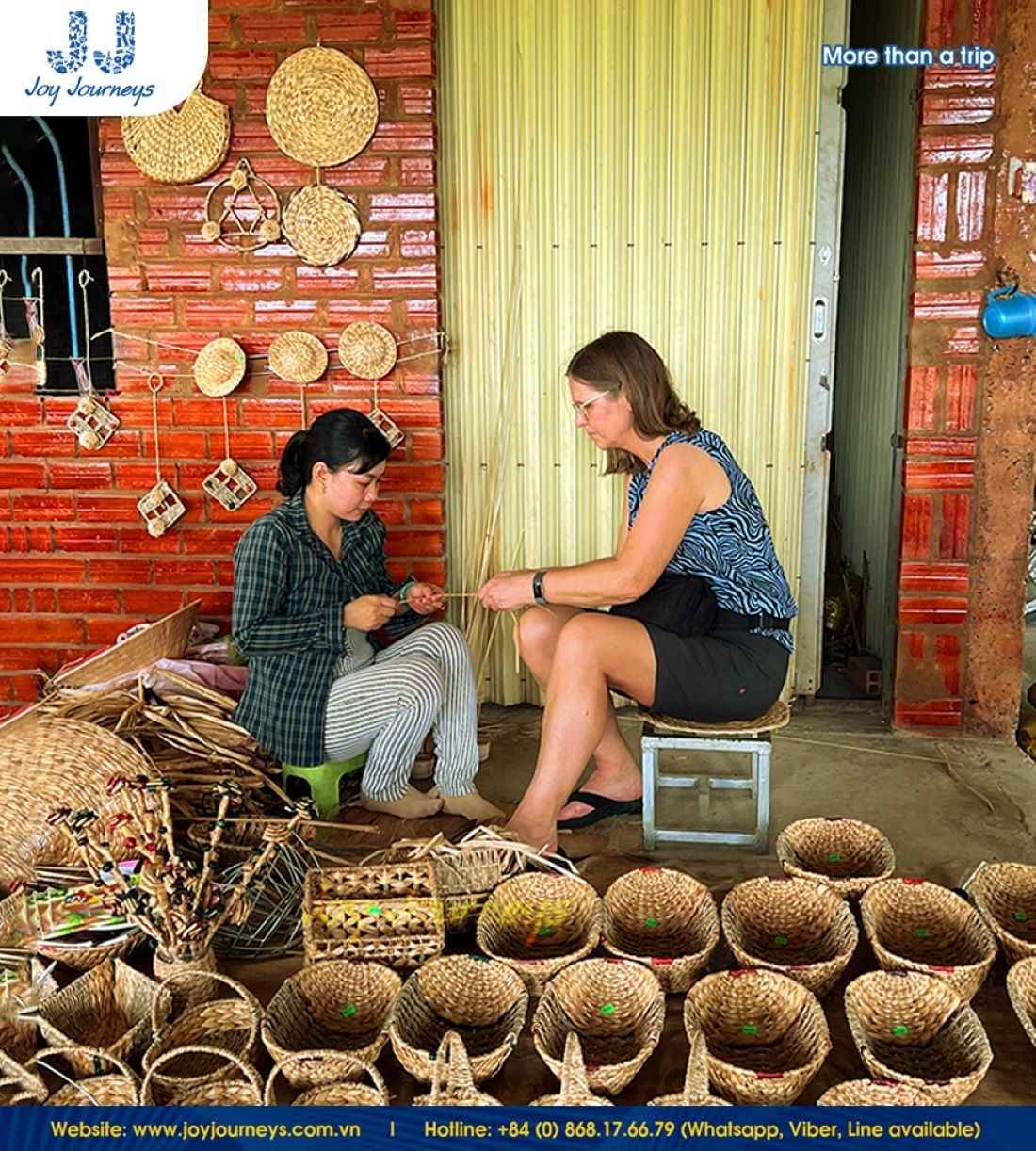
Explore life on the Mekong River
- Take a boat trip to experience the river and the life of people on the river.
- Floating markets are a unique cultural feature of the Mekong Delta. These markets are held on boats, with each boat carrying a variety of goods, including food, drinks, fruits, and even household items.
- When visitors come to the floating market, they will immerse themselves in the bustling market scene on the river, experience shopping, and exchange goods like the locals.
Tips for Backpacking the Mekong Delta
Backpacking Mekong Delta solo requires careful planning and a light approach. Instead of overpacking, focus on essentials that will enhance your experience. Prepare items that cater to local customs, communication needs, and practical necessities to ensure a smooth and respectful journey.
Learn a few basic Vietnamese phrases
Learning to use a few Vietnamese phrases will help you a lot on this trip because the vendors may only use their mother tongue. Some basic phrases to know are:
- “Xin chào” – “hello”
- “Cảm ơn” – “thank you”
- “Cái này giá bao nhiêu?” – “how much is this?”
- Bộ số đếm: “một” – “one”, “hai” – “two”, “ba” – “three”, “bốn” – “four”, “năm” – “five”, “sáu” – “six”, “bảy” – “seven”, “tám” – “eight”, “chín” – “nine”.
- Các mệnh giá tiền:
- “Một nghìn đồng” – “One thousand dong”
- “Hai nghìn đồng” – “Two thousand dong”
- “Năm nghìn đồng” – “Five thousand dong”
- “Mười nghìn đồng” – “Ten thousand dong”
- “Hai mươi nghìn đồng” – “Twenty thousand dong”
- “Năm mươi nghìn đồng” – “Fifty thousand dong”
- “Một trăm nghìn đồng” – “One hundred thousand dong”
- “Hai trăm nghìn đồng” – “Two hundred thousand dong”
- “Năm trăm nghìn đồng” – “Five hundred thousand dong”

Be prepared for the weather
The tropical monsoon climate of Asia in the Mekong Delta is very typical, with hot sun and a lot of rain. Therefore, when traveling, you need to prepare for weather issues:
- Bring an umbrella, raincoat and non-slip shoes if visiting in the rainy season.
- Bring a jacket, hat, and sunscreen in the dry season.
- In addition, mosquito and insect repellent are necessary products.
Bargain at markets
Bargaining skills are essential when shopping at local markets. Tourists should decide in advance what items they want and their target prices. To avoid scams, shopping at places with posted prices is a safe option.
Embrace the local culture
The Southwest is a spiritual land of Vietnam, with many pagodas, temples, etc., so you should avoid wearing revealing clothes when visiting. Recommended clothing is shirts that cover the shoulders and skirts that cover the knees.
Prepare clothes
- Comfortable, lightweight clothing: As you will be on the move frequently in the Mekong Delta, opt for stretchy, lightweight clothes.
- Sunscreen, hat, jacket: The sun in this region can be quite harsh, with high UV intensity, so sunscreen products are indispensable.
- Anti-slip shoes: The area has many rivers and fertile soil, so wearing anti-slip shoes will help you limit unwanted incidents.
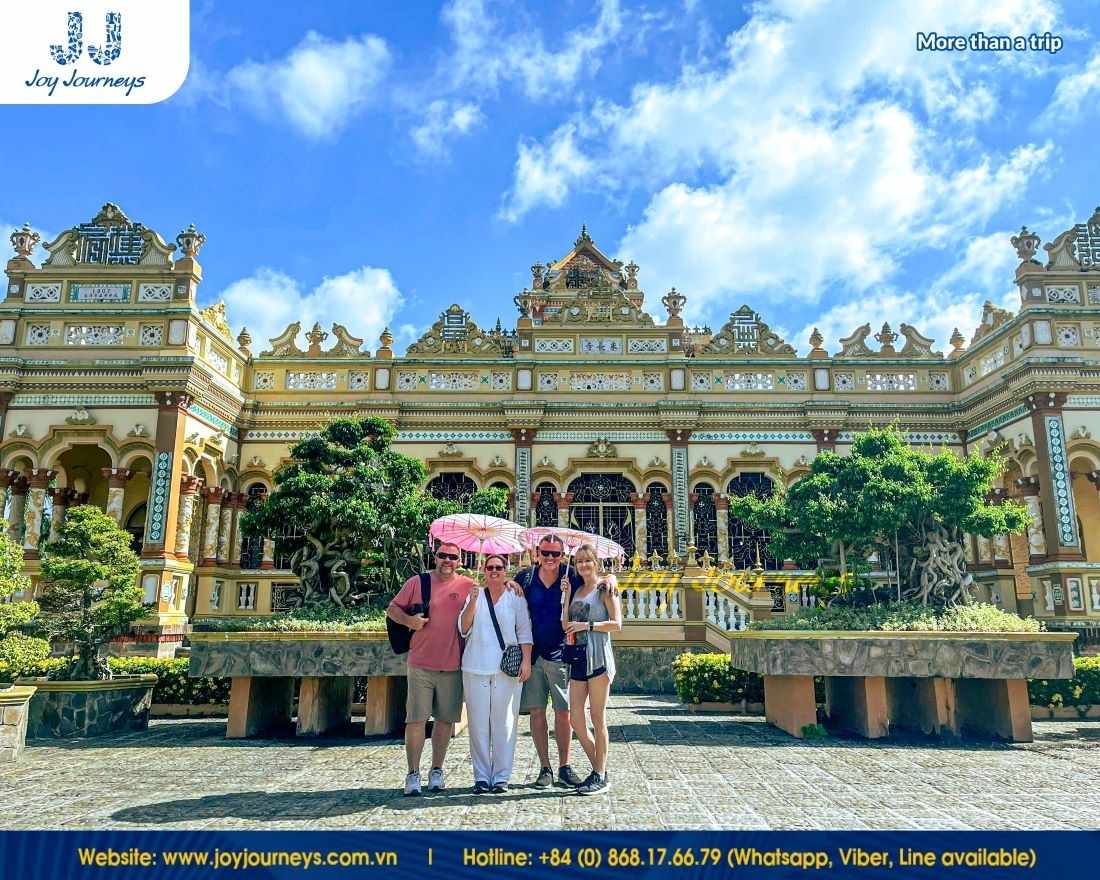
FAQs about the Mekong Delta tours for backpackers
How much does it cost to backpack in the Mekong Delta?
The cost of backpacking in the Mekong Delta is relatively inexpensive, but the total amount of money will vary depending on the duration of your trip. On average, a day of traveling in the Mekong Delta with basic expenses such as hotel rental, transportation, food, and drink will cost about 500,000 – 700,000 VND.
Is it safe to backpack in the Mekong Delta?
Backpacking Mekong Delta solo is still safe, as long as you can properly arrange the trip’s activities. If you book a tour through an agency, you need to choose a reputable company.
Travel insurance also needs to be registered before you start your journey.
What is the best time of year to backpack in the Mekong Delta?
Depending on your weather preferences, you can choose to visit this area all year round:
- September to November is the flood season. In this time, the Mekong Delta will be a unique landscape with its green and lush trees growing.
- The dry season is from May to July. It is suitable for visitors who want to participate in outdoor activities and enjoy tropical fruits.
How do I get around the Mekong Delta as a backpacker?
You can rent a motorbike to travel the Mekong Delta from Ho Chi Minh City, with costs ranging from 250,000 to 300,000 VND per day. Then leave the motorbike at your accommodation if you want to experience the boat or raft. In addition, you can also travel to the Mekong Delta by public transport and move between different provinces by boat.
What are some must-visit places for backpackers in the Mekong Delta?
- Vinh Trang Pagoda: the Ministry of Culture, Sports and Tourism ranked this as a national monument in 1984. Vinh Trang Pagoda’s primary design is Vietnamese architecture. The pagoda is built into four main rooms connected: Front Hall, Main Hall, Ancestor House, and Rear House. It has an area of up to 14,000 m2 and is built with many precious woods.
- Con Phung: The Con Phung tourist area is an eco-tourism destination in Ben Tre province. It is an island located in the middle of the Tien River. Here, you can enjoy unique activities exclusive to the Southwest region of Vietnam, such as catching fish, listening to ‘don ca tai tu’, fishing for crocodiles, etc.
- Cai Rang floating market: It is a floating market specializing in buying and selling vegetables on the Can Tho River. It was recognized by the Ministry of Culture, Sports and Tourism as a National Intangible Cultural Heritage in 2016. Visitors can see and learn about the activities of many merchant families on the river.
- Mang Thit brick village has existed and grown along the Co Chien River for more than 100 years. This is the largest brick kiln village in the Mekong Delta, and its products are exported to many developed countries worldwide.
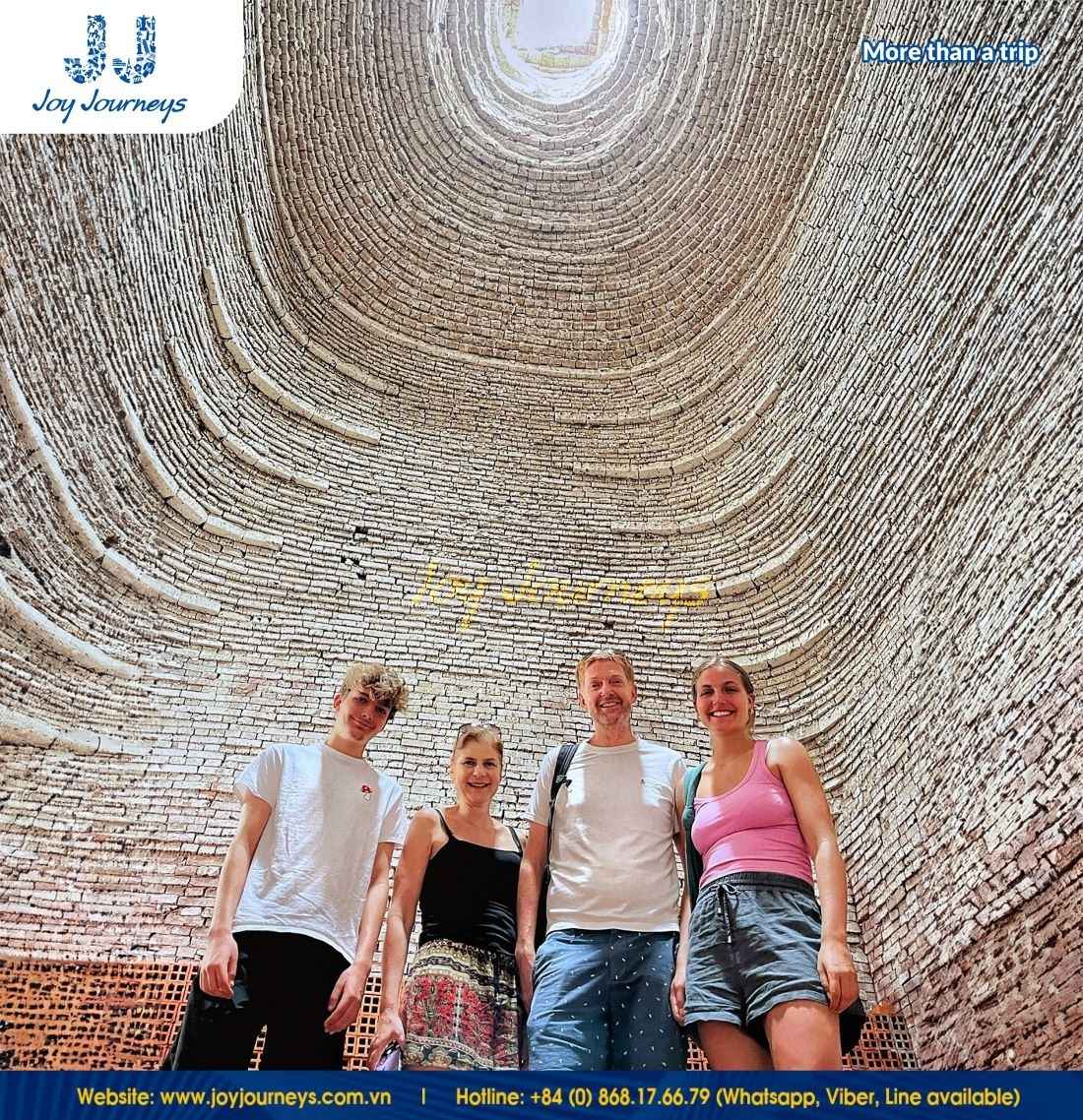
- Tram Chim National Park: This wetland is in Vietnam’s special-use forest system. It is a conservation area for red-crowned cranes, a rare bird species listed in the Red Book.
Conclusion
When backpacking the Mekong Delta, you must have a plan of what to do and where to go to make your trip smooth and hassle-free. Estimate the duration and expenses of your trip to stay within budget and ensure a well-planned itinerary. Joy Journeys wishes you an incredible journey in exploring the Mekong Delta
To create a journey that is “more than a trip”, contact Joy Journeys at:
- Website:https://joyjourneys.com.vn/
- WhatsApp: +84 (0) 868.17.66.79


Related Posts
Saigon’s “Flower Market Replica”: Where To Find Them
Ho Chi Minh City’s floral charm is not limited to its bustling wholesale markets. Imagine wandering through a place where vibrant petals, fragrant blooms, and the spirit of traditional Vietnamese markets come alive—without the overwhelming crowds. A flower market replica captures that magic, blending the beauty of fresh flowers with the charm of a curated, […]
Is it Safe to Travel to Vietnam Right Now? A Complete 2025 Guide
Vietnam has emerged as one of Southeast Asia’s most captivating destinations, drawing millions of visitors annually with its rich culture, stunning landscapes, and incredible cuisine. However, many travelers still ask: Is it safe to travel to Vietnam right now? This comprehensive guide provides you with everything you need to know about Vietnam travel safety in […]
Ho Chi Minh Cu Chi Tunnels Tour: The Ultimate Guide
The Cu Chi Tunnels stand as one of Vietnam’s most remarkable historical sites, offering visitors a profound glimpse into the ingenuity and resilience displayed during the Vietnam War. For travelers, a Ho Chi Minh Cu Chi tunnels tour represents an essential experience that combines education, adventure, and deep cultural understanding. This comprehensive guide will help […]